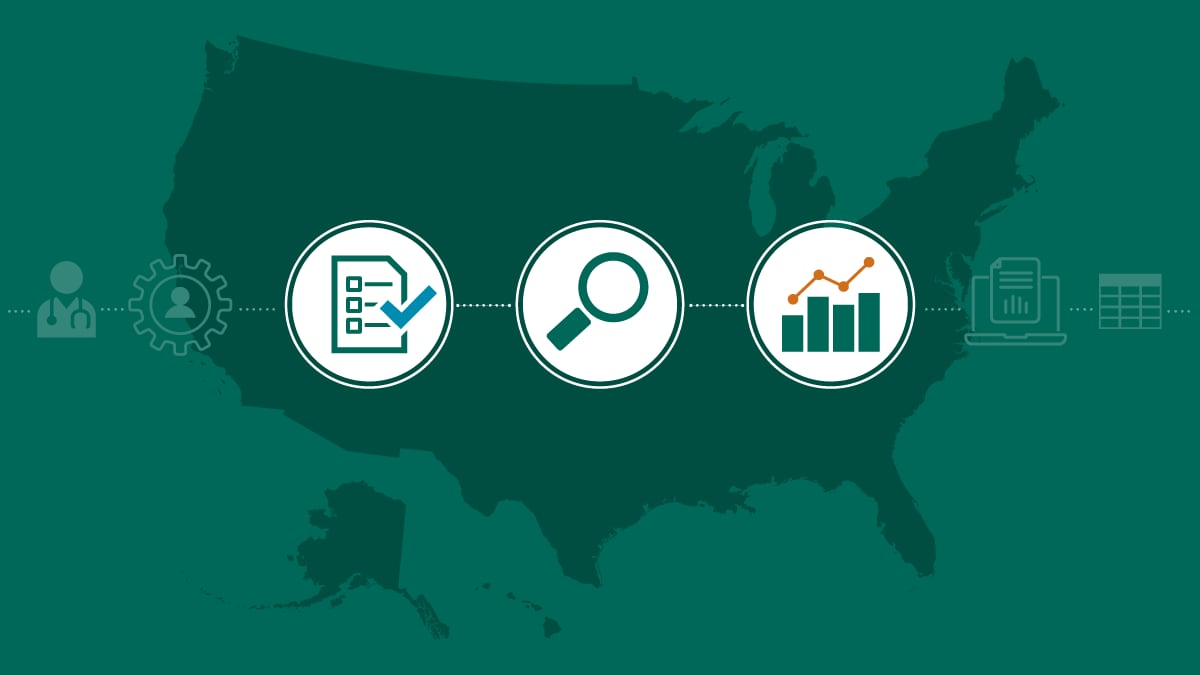Key points
- The National Center for Health Statistics (NCHS) Quality Guidelines outline the procedures that ensure our information meets quality standards.
- NCHS procedures address information quality and integrity as we collect, analyze, and disseminate data and analysis.
- NCHS ensures the security of our data by enforcing extensive controls to protect the information.

Quality assurance
The National Center for Health Statistics (NCHS) is recognized as one of the major statistical agencies in the federal government.
NCHS knows that quality assurance—the process of ensuring our products meet our quality standards—begins when information development begins. We routinely use widely accepted methods and procedures for ensuring quality. These include independent assessments of our statistical methodologies and maintenance of professional standards in all we do.
To ensure our statistical and analytic information is useful, NCHS conducts independent research and consults with experts in data collection, data analysis, and other relevant topics, issues, and practices.
NCHS also regularly engages with people who use our data and products. Our staff participate in conferences, workshops, and other forums that connect us with these users. This engagement helps NCHS to assess and identify their current and future data needs.
NCHS reviews the quality of information—including objectivity, utility, and integrity—before dissemination. NCHS treats information quality as integral to every step of information development. This includes information creation, collection, maintenance and dissemination. NCHS also employs a wide variety of dissemination methods to make statistical and analytic information products widely available and broadly accessible.
Objectivity
To ensure our statistical and analytic information products are objective—accurate, reliable, and unbiased—NCHS collects data using accepted statistical theory and practice. In preparing our information products, we follow and document generally recognized guidelines in terms of defining acceptable standards for—
- Minimum response rates
- Maximum standard errors
- Cell size suppression
- Quality of coding
- Other processing operations
NCHS also maintains staff expertise in areas such as—
- Concept development
- Survey planning and design, including questionnaire development and testing
- Data collection
- Data processing and editing
- Data analysis
- Evaluation procedures
- Methods of dissemination
NCHS's Paper Reduction Act clearance packages ensure compliance with these and other guidelines for collecting, maintaining, and using information. NCHS complies with guidelines from—
Information security
NCHS ensures the security of our statistical and analytic information products by enforcing rigorous controls that protect against—
- Unauthorized access to our data
- Revision or corruption of our data
- Unauthorized use of our data
Some of the major controls used at NCHS include—
- Access control
- User authentication
- Encryption
- Access monitoring
- Provision of unalterable electronic content
- Audit trails
Clearance procedures
NCHS statistical and analytic information products undergo a formal clearance process and editoiral review before dissemination. Both a designated official within the author's office or division and the NCHS Associate Director for Science review publications and reports in any format.
These reviews cover—
- Clarity of descriptive text
- Appropriateness of the methodology
- Soundness of the analysis
- Adherence to confidentiality and disclosure avoidance restrictions
- Readability of tabular and graphic presentations of data
Oral presentations are subject to appropriate supervisory review. When NCHS released public-use tapes, they also were reviewed for accuracy and appropriate confidentiality protections.
NCHS statistical and analytic information products are developed using generally acceptable, well documented, publicly available statistical practices and methodologies. Statisticians and analysts outside of NCHS can use these procedures to replicate NCHS statistical methods and obtain results consistent with NCHS.
